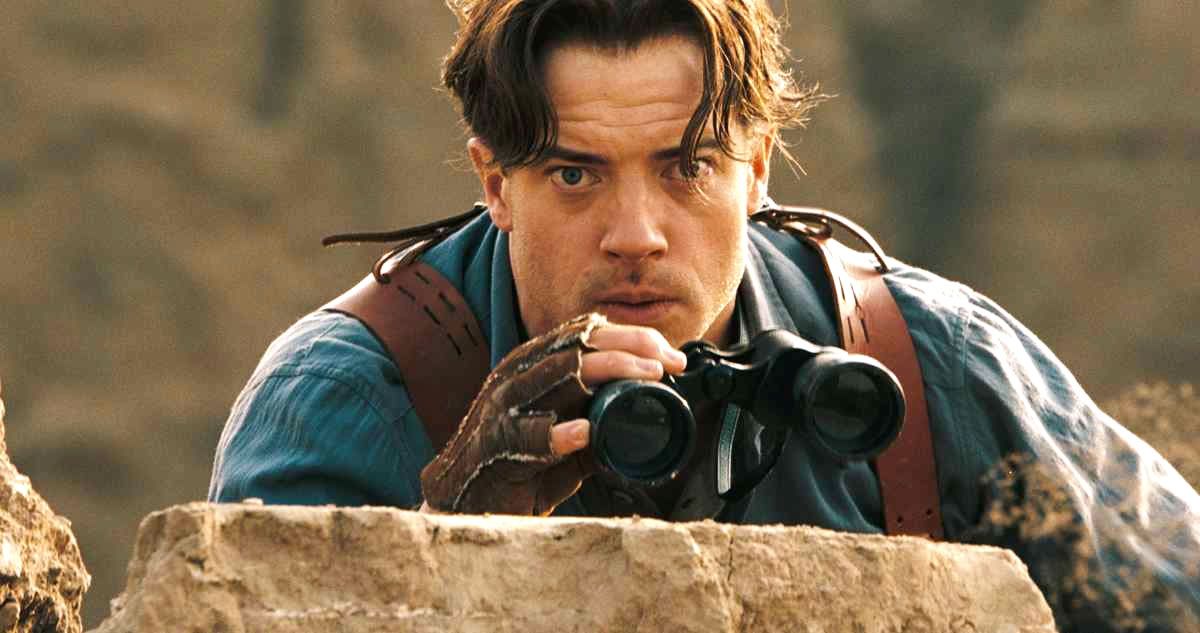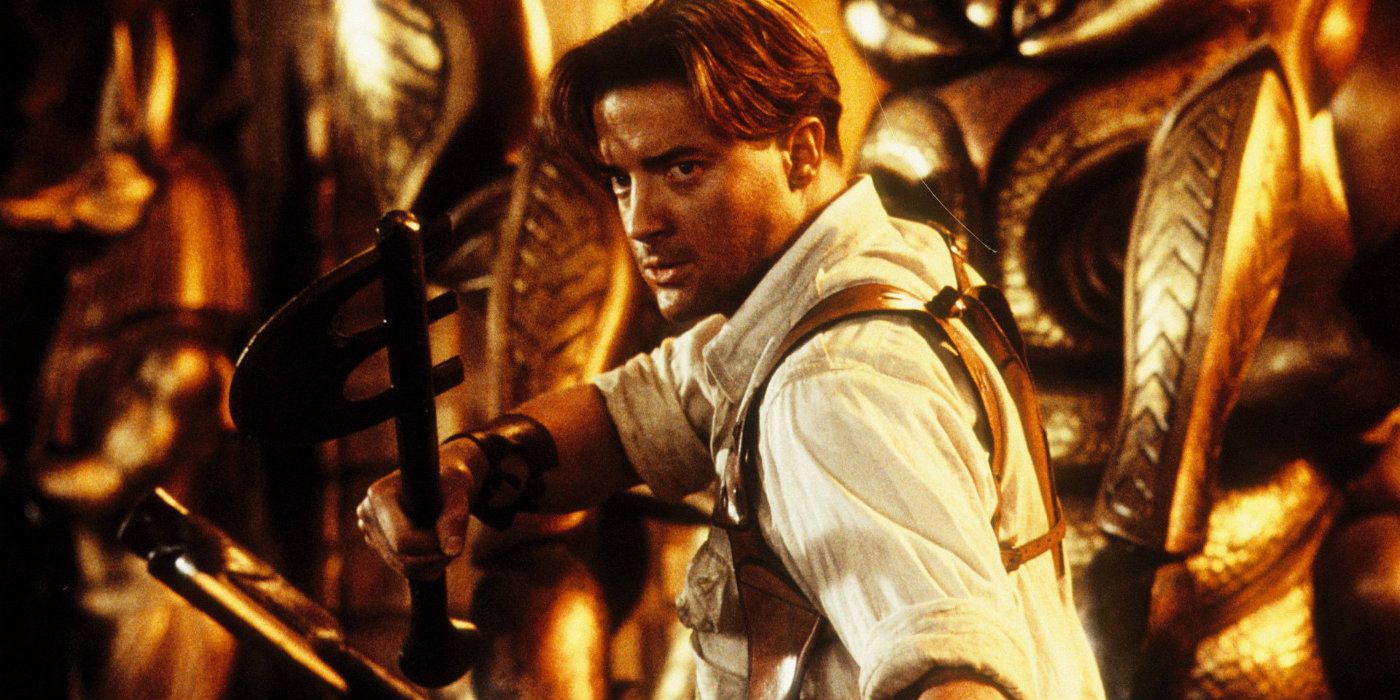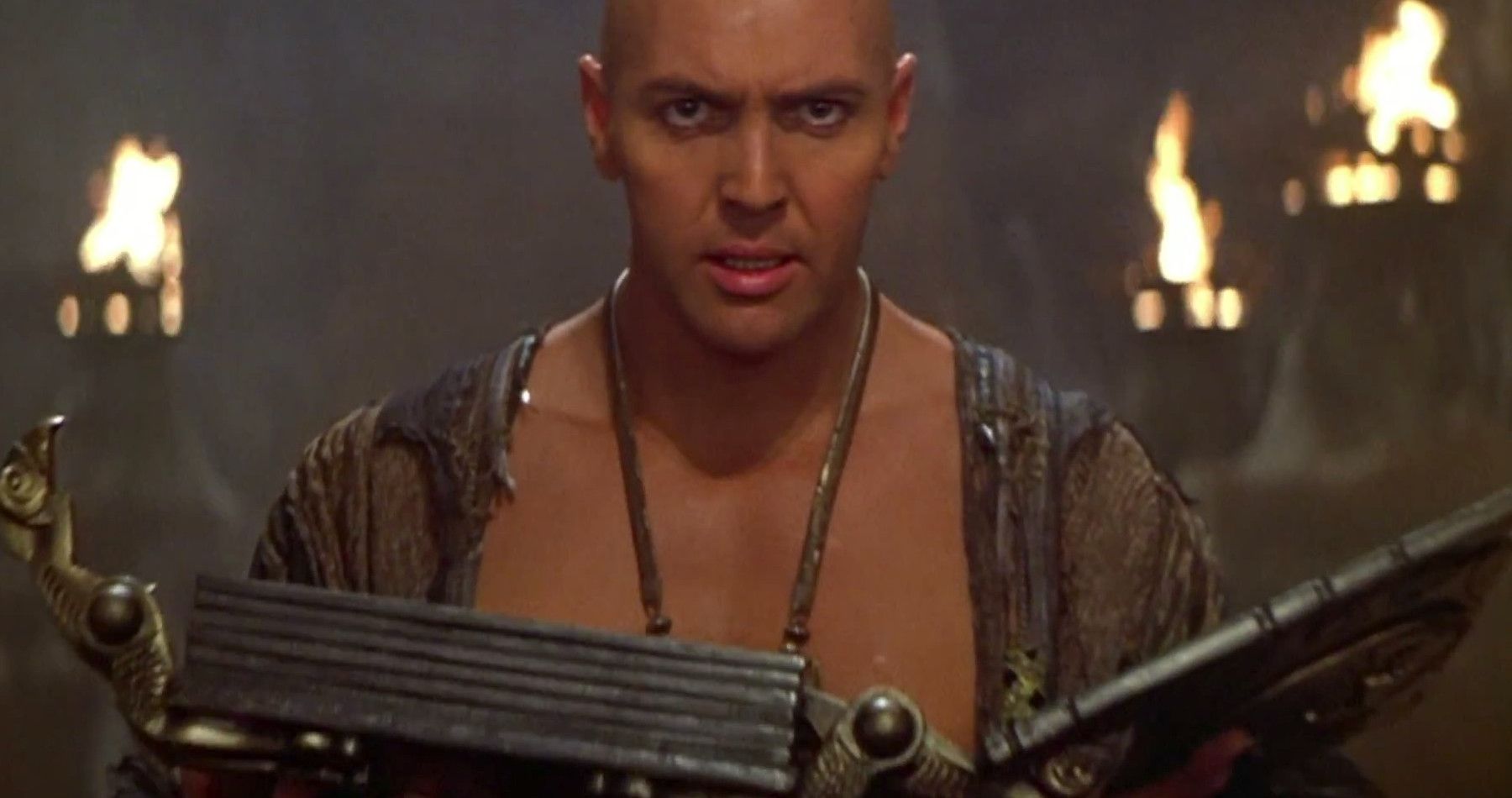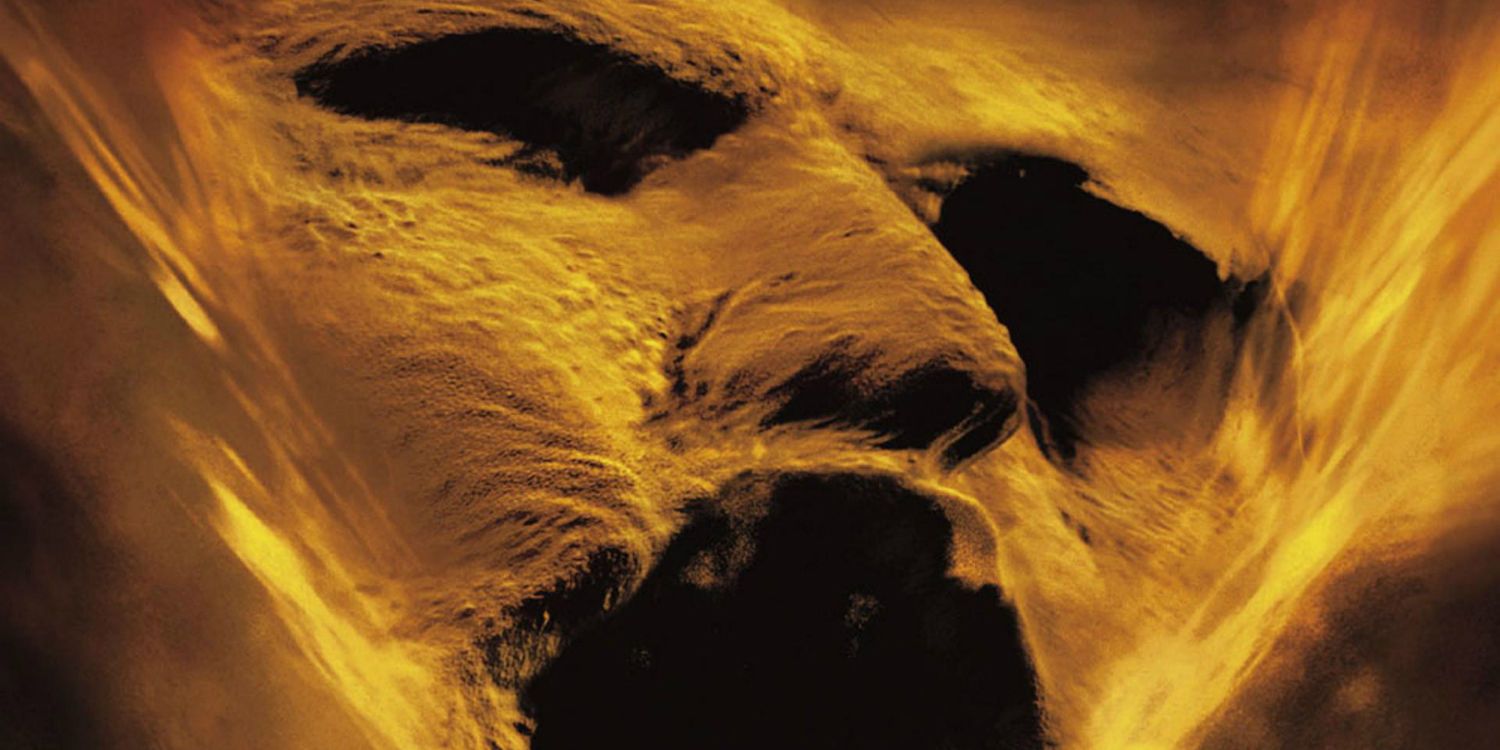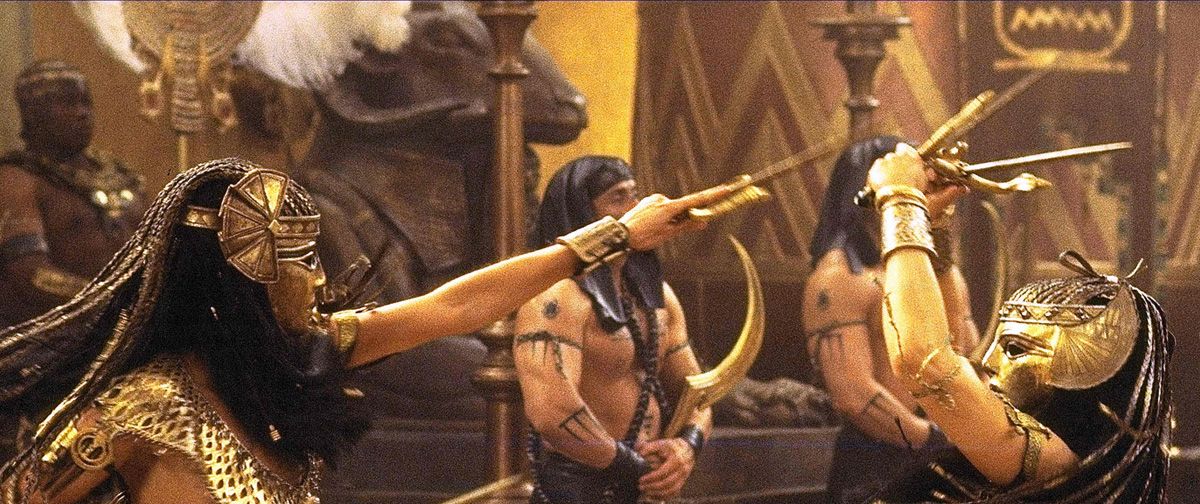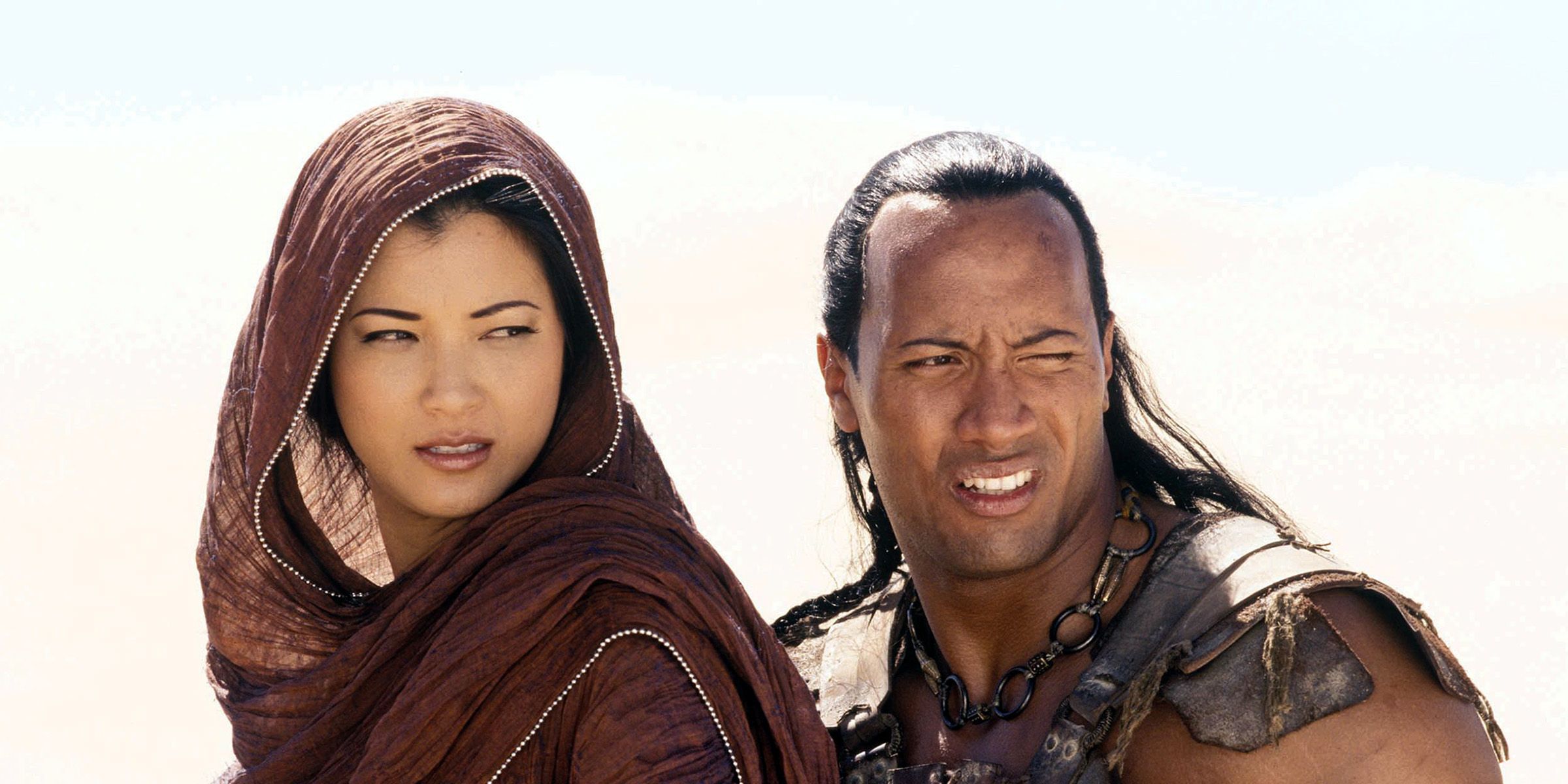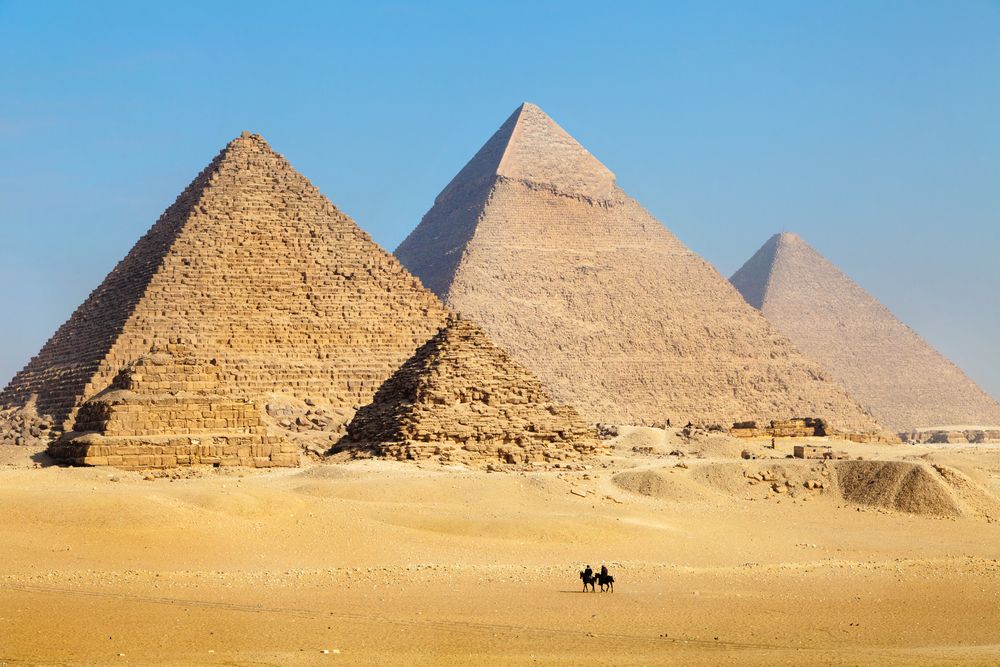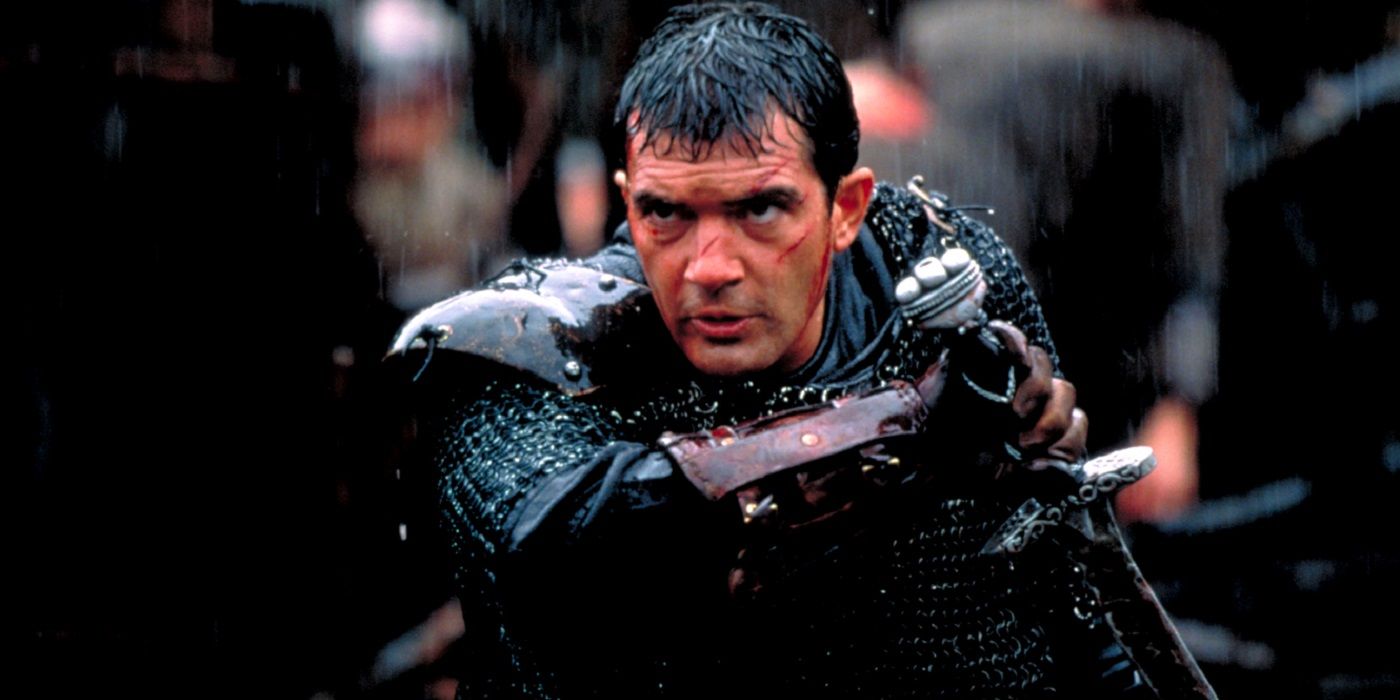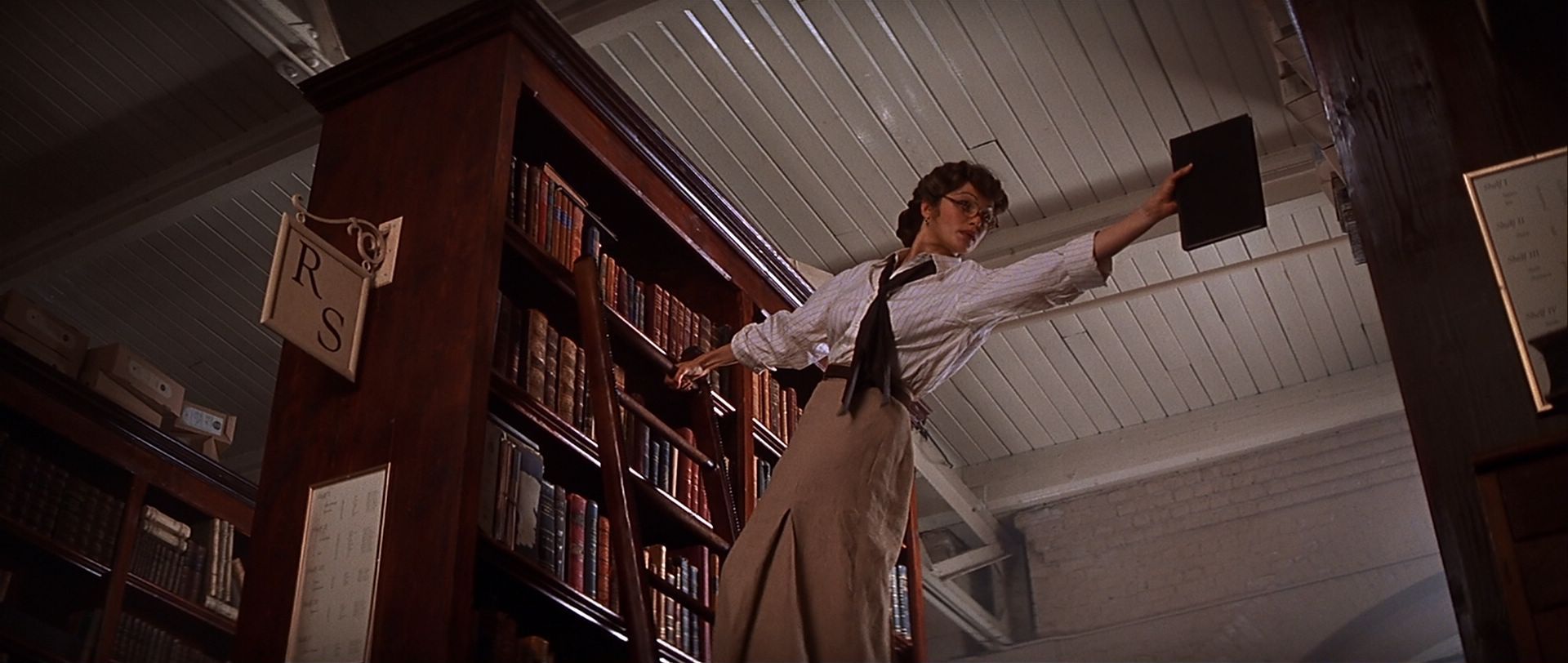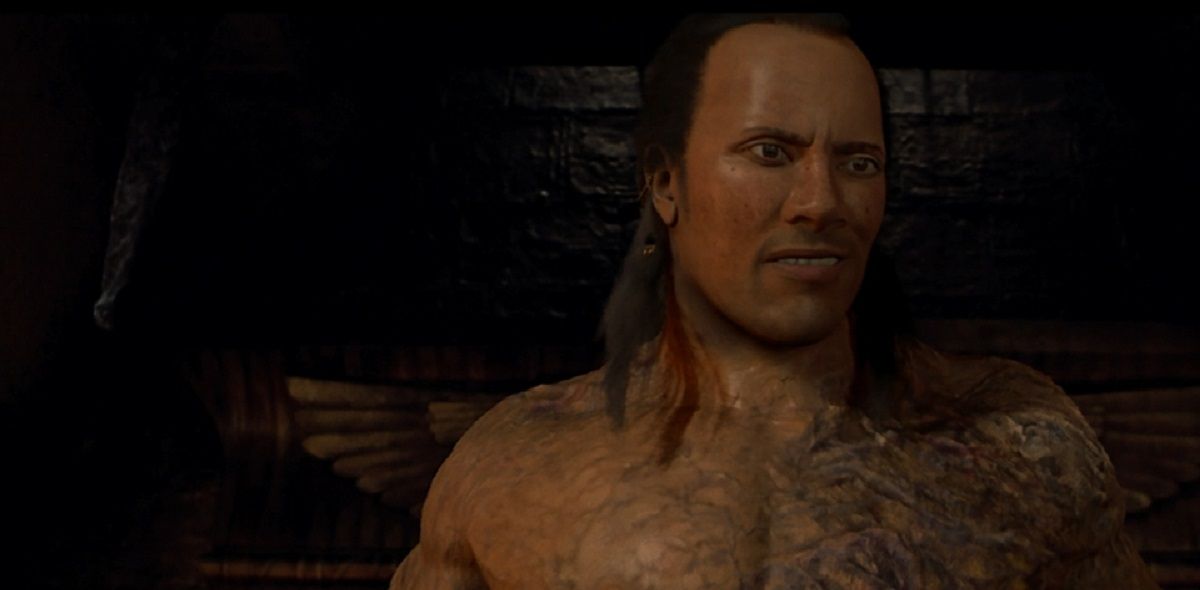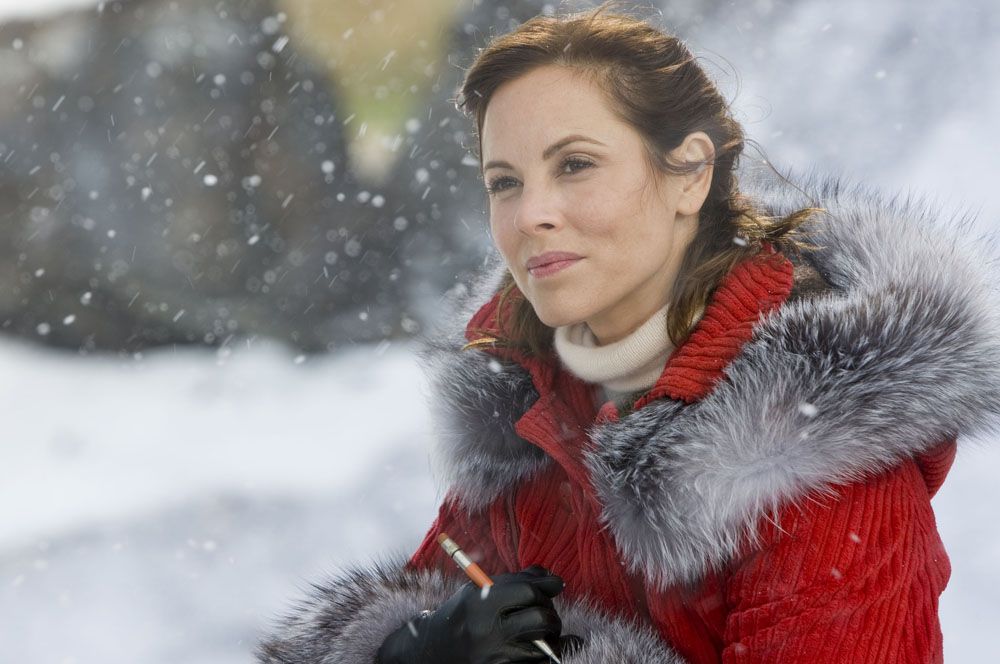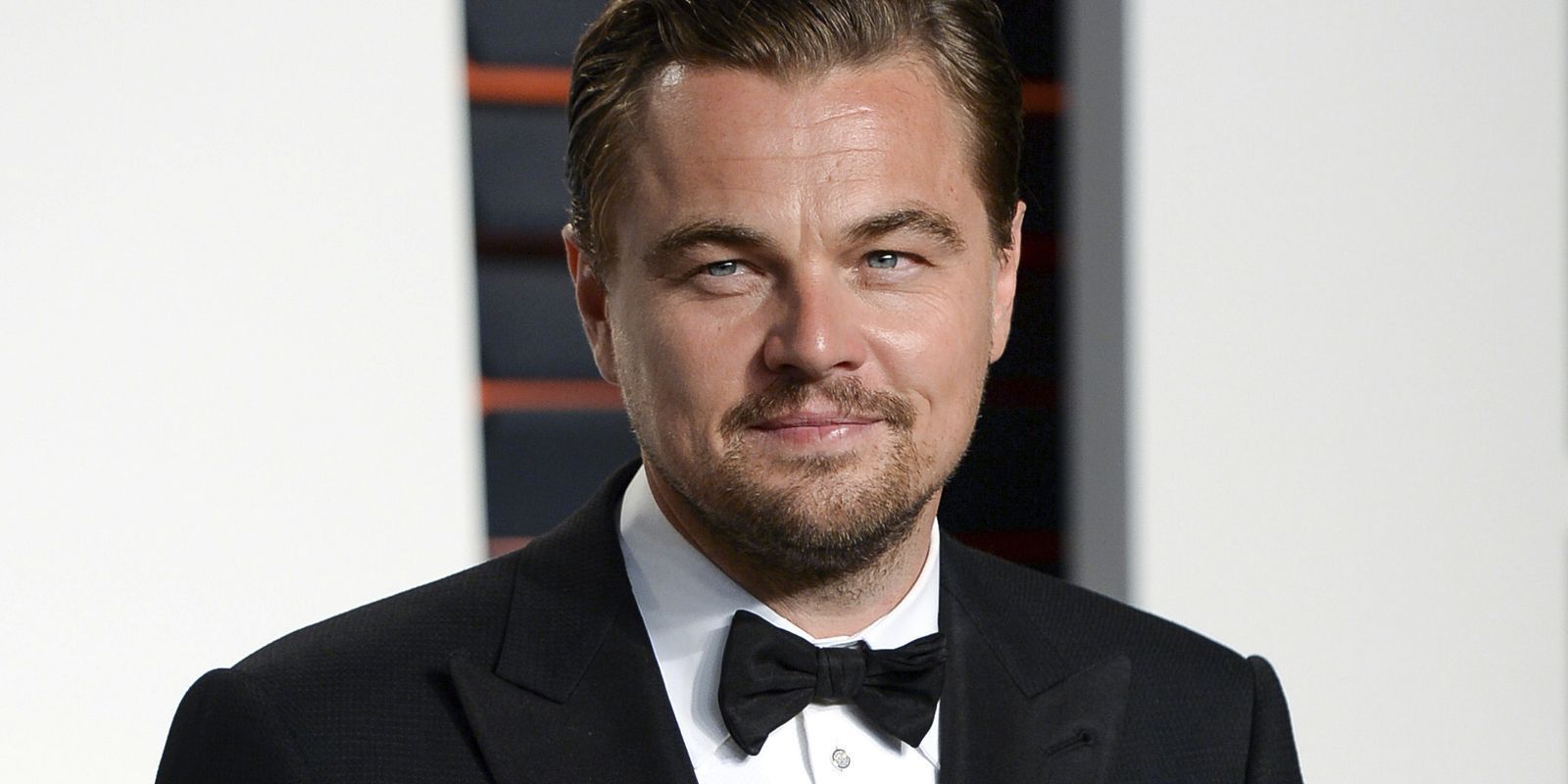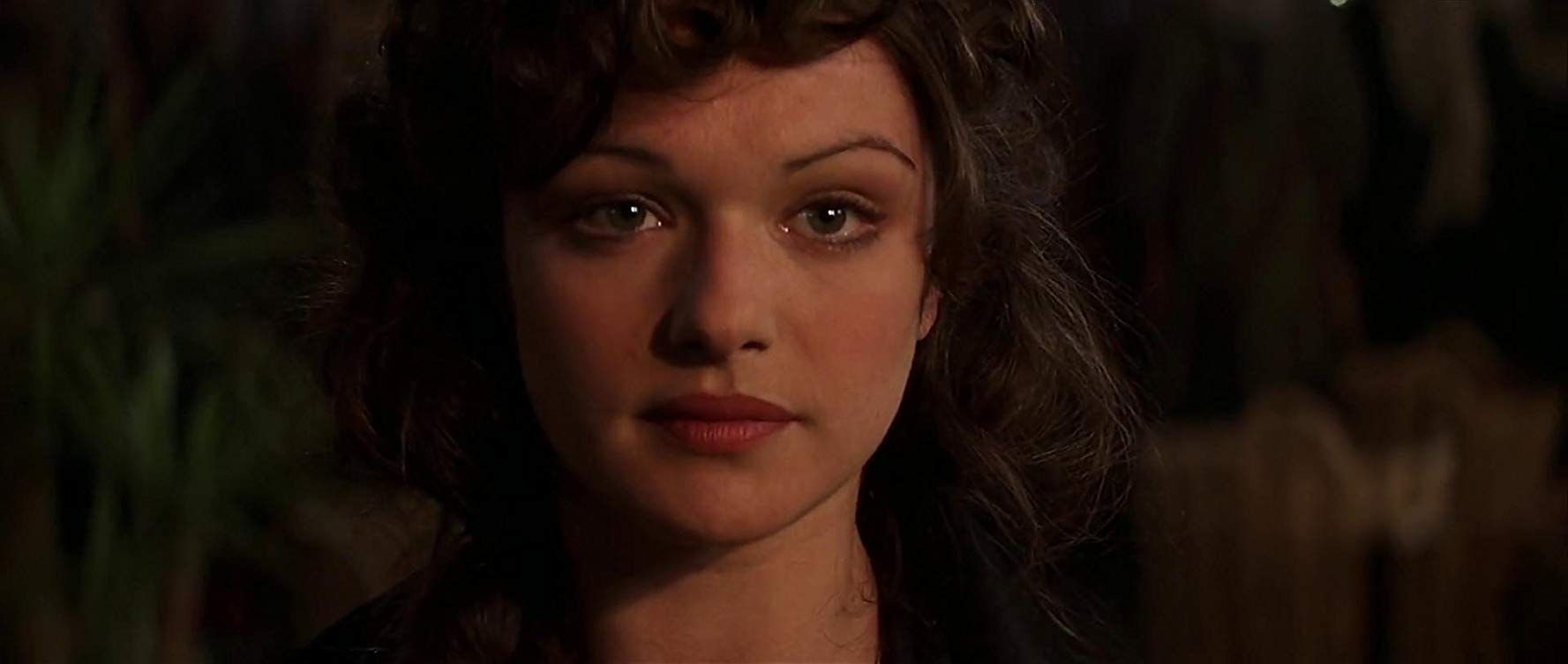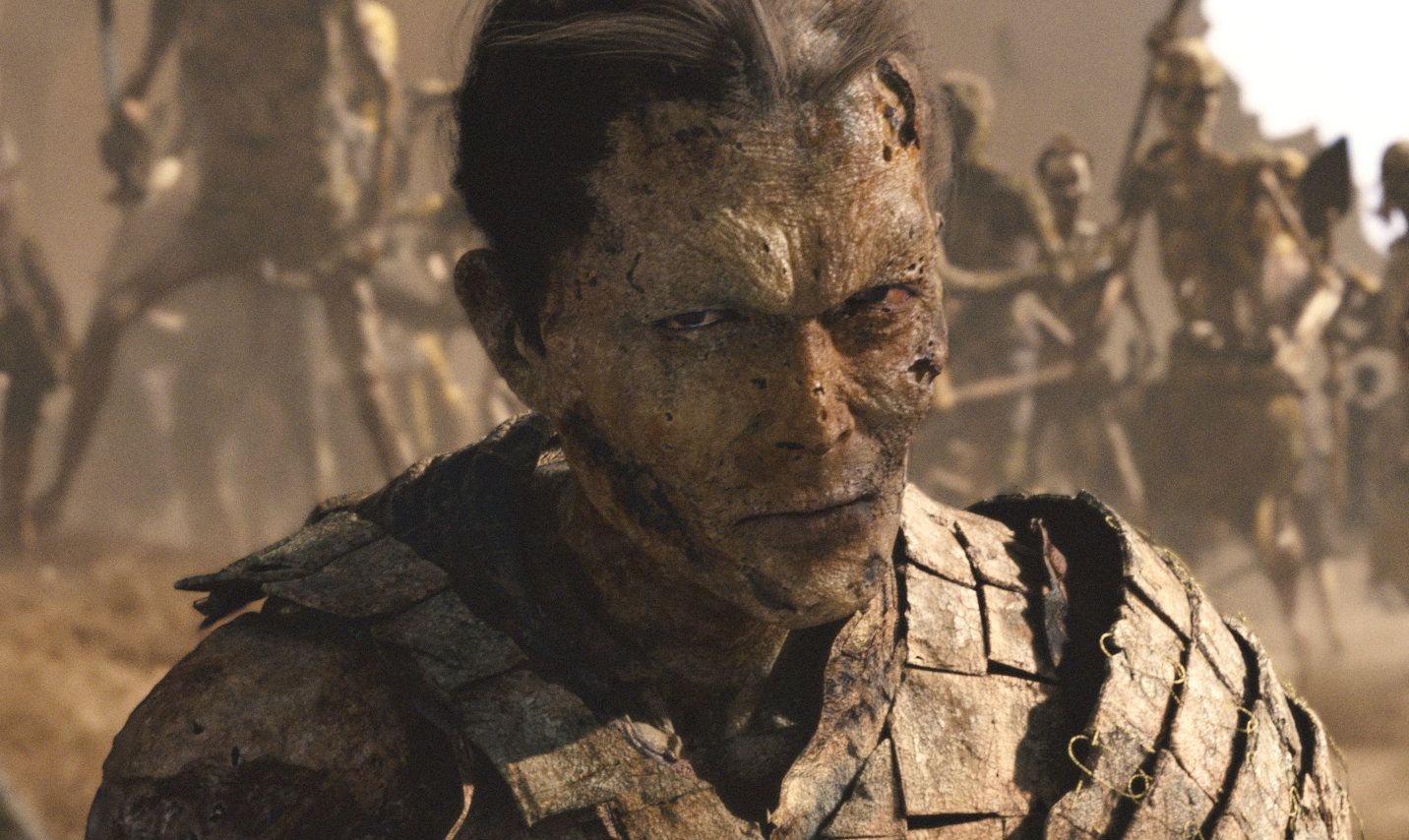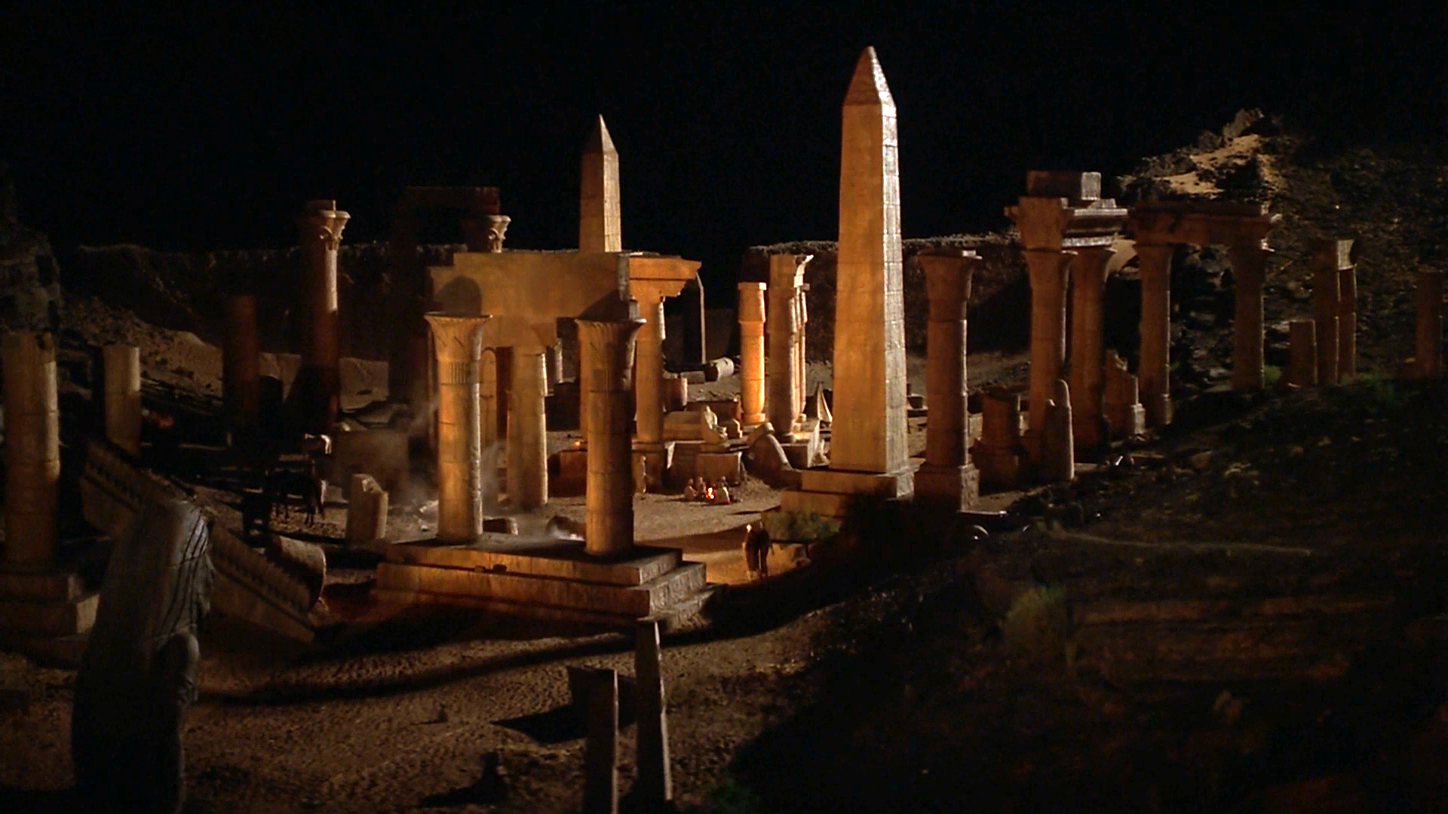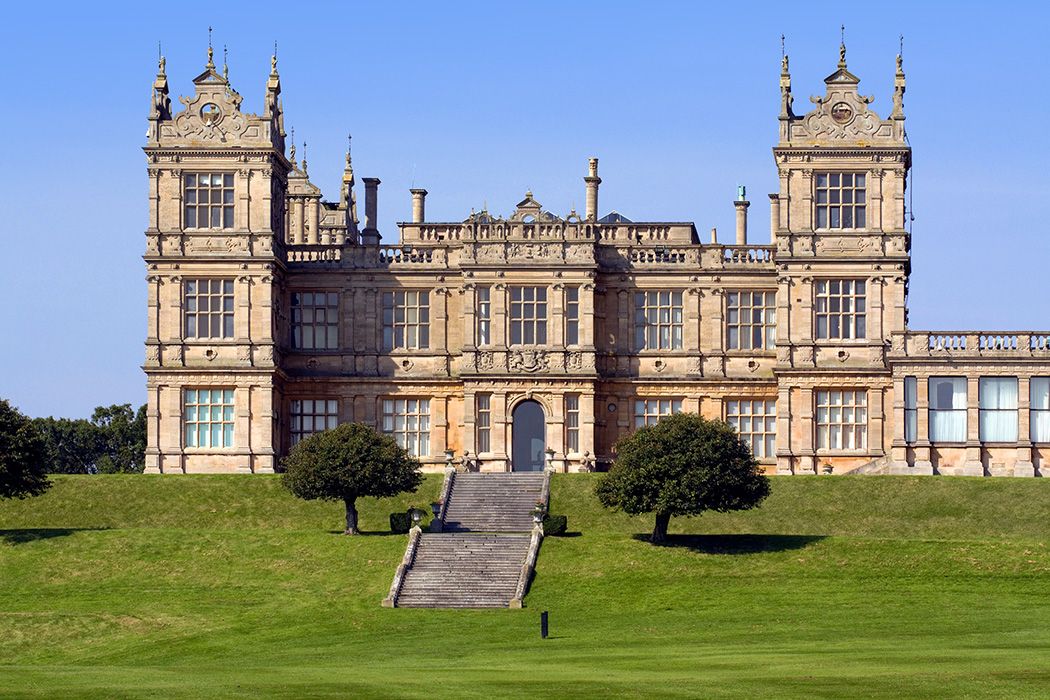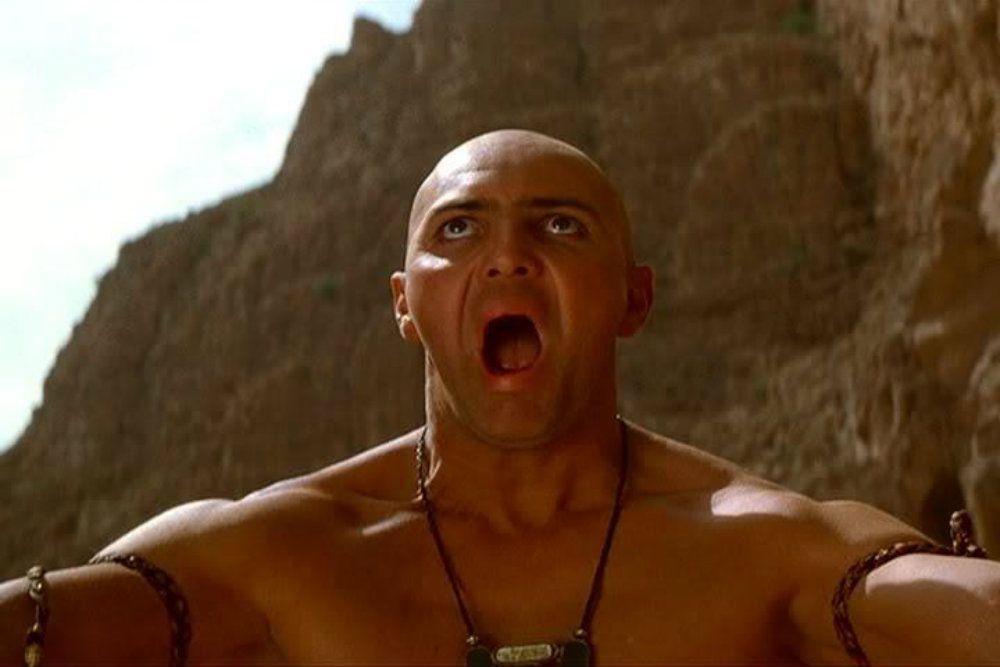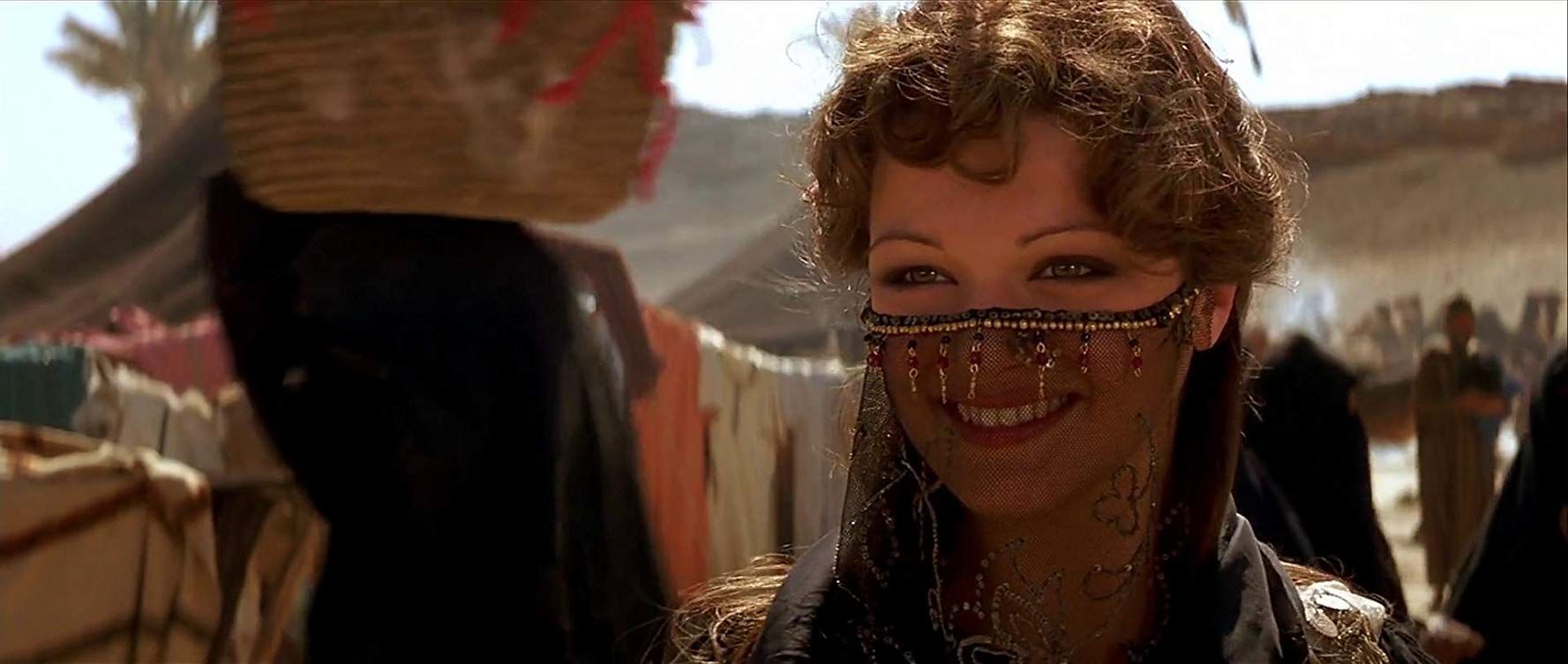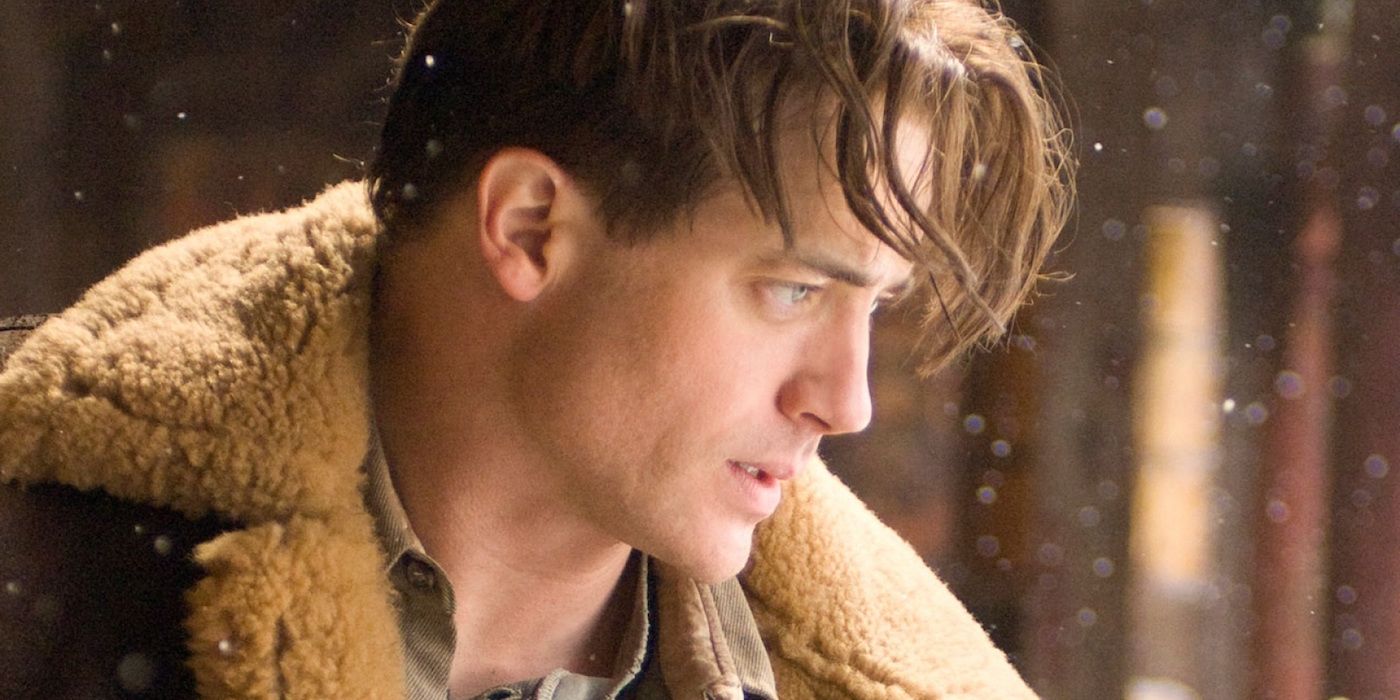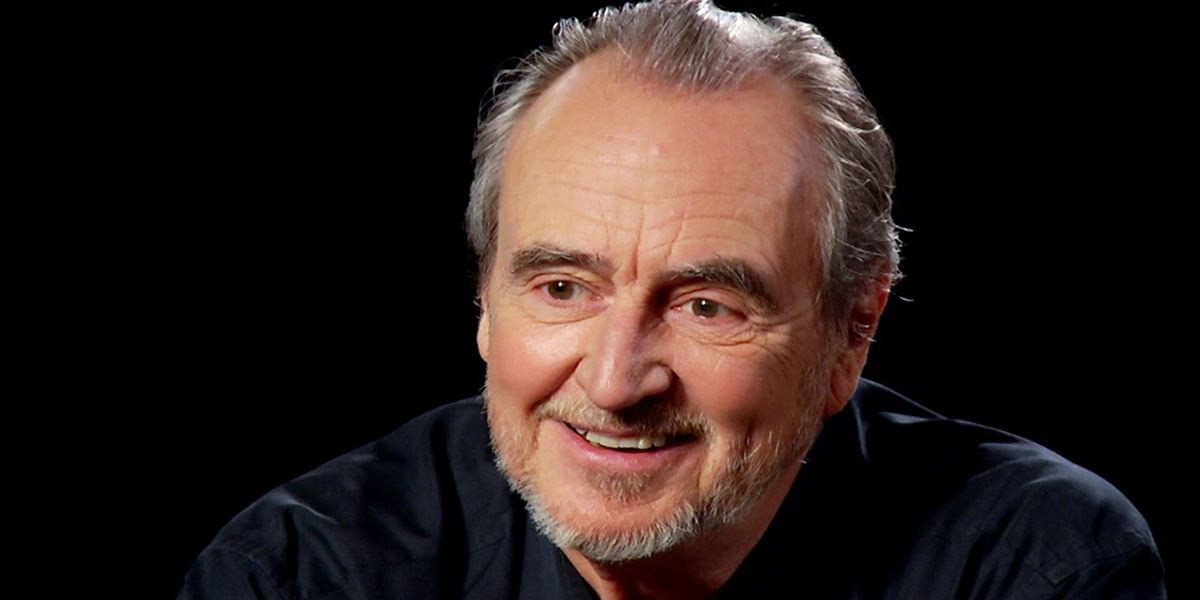Let's get this out of the way up front: this list won't be discussing the 2017 Tom Cruise-led reboot of The Mummy franchise that made decent money but overall wasn't particularly well-received. Instead, we're going to focus on the more beloved sub-series of the long-running "Mummy franchise" that began with the 1999 Brendan Fraser-starring film and continued on through 2008's Tomb of the Dragon Emperor. We'll also touch on the spin-off Scorpion King series that was jump-started by Dwayne "The Rock" Johnson.
Back in the late '90s Brendan Fraser was a bonafide star. He was a great fit as the Indiana Jones-esque lead to the delightfully campy Mummy trilogy that he headlined. Blending elements of action, comedy, and horror, the movies seemed to kick off something of a renaissance for old school-style Hollywood adventure films that led to releases like National Treasure, The Da Vinci Code, Night at the Museum, and even a comeback from Indiana Jones himself.
The Mummy trilogy-- as it is commonly referred to-- has a fascinating history, with plans set in motion as early as 1992 and going through various directors, lead actors, budget sizes, and tonal shifts before things finally fell into place for the release of the first installment at the end of the decade. Things got even more interesting once those movies actually went into production, from medical emergencies to rumors of a curse to insurance policies you didn't even know existed.
Here are 20 Crazy Secrets Behind The Making Of The Mummy Movies.
Spider, Snakes, And Scorpions Attacks
While great lengths are usually taken to keep actors safe from the various dangerous animals and insects they have to work with while filming a movie, there is only so much that can be done when a movie is being made in a region fraught with dangerous critters. And the crew is often less looked-after than a production's valuable stars.
Throughout the filming of The Mummy, it became a common occurrence for members of the crew to be bitten by the native spiders and insects of the region-- and as many of the animals are poisonous, immediate medical aid was often required.
Crew members being airlifted via helicopter to the nearest hospital to be treated for the bites and stabs incurred from scorpions, spiders, and snakes happened on a regular basis during the production of the films.
A Close Shave
While he doesn't have the name recognition or get as much credit as some of the franchise's bigger stars, Arnold Vosloo-- who played the titular mummy Imhotep-- is one of the key components of its entire universe.
Relishing the chance to play Imhotep with scene-devouring campiness, Vosloo clearly had a good time making these movies. Well, for the most part.
One aspect of the role that Vosloo didn't love was that it required his body to be completely hairless.
With him spending much of the series shirtless and in a loin cloth, there was no room to allow for any stray chest or leg stubble. Vosloo had to be completely shaved two times a day whenever he was filming in order to keep that smooth look. Waxing was briefly attempted-- and immediately vetoed by Vosloo.
The Special brew
Filming in an actual desert presents a lot of problems, the most obvious of which is the oppressive heat. Since it's not exactly feasible to have an entire caravan of air conditioned trailers big enough for the entire cast and crew to retreat into between each scene, The Mummy's staff had to come up with an alternative option to keeping dehydration at a minimum.
The medical team on the films-- a team which no doubt had their work cut out for them-- ended up creating a special kind of drink that was to be consumed by everyone on set every couple of hours to help reduce the risk of dehydration.
Simply chugging water in those conditions isn't always sufficient.
For the most part, they were able to avoid any serious heat-related injury during production.
Rachel Vs Patricia
One of the most famous scenes in the entire Mummy franchise is the fight scene between Rachel Weisz and Patricia Velásquez in The Mummy Returns. It is a thrilling and well-choreographed fight between the two women that is a joy to watch simply as a cool action set piece.
As it happens, it actually is between those two women. While it would've been easy to let stunt performers do the heavy lifting as the characters are in masks for much of the fight, Weisz and Velásquez instead opted to spend a grueling five months training for just that one battle in order to do it themselves.
Dwayne Johnson's Guinness World Record
Dwayne Johnson-- who was still being credited as "The Rock" in those days, even in his acting roles-- made his non-documentary film debut in The Mummy Returns. It wasn't a huge part, and Johnson was at that point still very much a full-time wrestler who was only just dabbling in acting.
That all changed with the first Mummy spin-off movie, The Scorpion King, which gave Johnson his debut headlining role.
By that time, Johnson had earned enough star power that the studio saw fit to gamble on him with a record-breaking payday.
Johnson officially became a Guinness World Record holder when his $5.5 million paycheck for the movie was deemed the highest-ever (at the time) for a first-time leading man.
They Couldn't Film In Egypt
The primary setting for the Mummy trilogy is in Egypt, and it's easy to assume that that's where the movies were filmed. As it turns out, shooting the movie in Egypt wasn't possible as the turmoil of the region would've made production both too dangerous and too fraught with legal entanglements.
Instead, the Moroccan region of the Sahara desert was ultimately deemed a suitable substitute for Egypt, and that's where the bulk of the external scenes of the first two movies were shot.
The interiors were largely shot in Morocco as well, with additional filming done in and around various buildings and a soundstage in the UK.
With the third Mummy movie's shift to a more Asian-influenced setting, much of the filming was done in China, supplemented by sets built in Montreal.
All the gunfire is CGI due to sand
"I don't like sand. It's coarse and rough and irritating and it gets everywhere." While that much-derided quote delivered by Anakin Skywalker during the Star Wars prequels has kept snarkers and meme-makers busy over the years, it takes on a whole new meaning for anyone who worked on the Mummy trilogy. Specifically, anyone who had to fire a weapon.
All of that sand had the unforeseen consequence of frequently jamming the guns used in the movie, rendering them unable to fire.
Eventually, after far too much time was wasted with constantly trying to repair and de-sand the guns, it was just decided that any misfiring weapon would be "fixed" in post-production by the wizards at Industrial Light and Magic, who added the appropriate sound effects and muzzle flashes where needed.
The canceled 4th movie
The third installment of the Mummy trilogy, Tomb of the Dragon Emperor, was a box office success and a fourth entry seemed certain-- with much of the cast eager to return.
The movie's subtitle was tentatively "Rise of the Aztecs," and it would introduce Antonio Banderas to the Mummy universe as a new antagonist.
However, with Universal looking to get in on the "cinematic universe" action, it was decided that the next Mummy movie instead be a fresh reboot rather than a sequel, in order to begin building the planned Dark Universe of interconnected monster movies around it.
After 2017's The Mummy didn't make as much money as Universal hoped, plans for the Dark Universe were put on hold for a time-- though the studio apparently hasn't given up on it just yet.
The Library scene's single take
One of the funniest scenes in the original Mummy movie is where Rachel Weisz's Evelyn is putting away books in a library and inadvertently causes a domino effect of several massive wooden shelves to come tumbling down.
It seemed like a quick, disposable little scene, certainly not as involved as some of the movie's other setpieces-- but it could've easily been much more resource-intensive if anything had gone wrong.
Fortunately, only one take was needed to get the library disaster scene right. If they would've needed to do an additional take, for any reason, it would've required an entire day's work to clean up the mess and completely re-set the scene to give it another go. Good thing everyone was on their game!
The Rock's Sun Smackdown
Maybe there was another reason that Dwayne Johnson got so much money for The Scorpion King beyond his rising star power and the movie's potential to earn big bucks at the box office. It might have been, in part, an apology to the actor for what he had to endure while making The Mummy Returns.
Johnson has said that he not only suffered heat stroke during production, but also got food poisoning so badly that he lost 10 pounds.
He has since said that the sicknesses he got during the movie made him feel the worst he has ever felt in his entire life-- and that's saying a lot coming from someone who spent years being body-slammed and hit in the face with steel chairs for a living.
Why didn't Evelyn return for movie #3?
While Rachel Weisz initially seemed as though she'd be returning to the role of Evie Carnahan-O'Connell once again for 2008's third Mummy movie, she ended up being replaced by Mario Bello. It was the only major casting change from the previous installment.
It was initially reported that Weisz didn't return because she didn't want to spend that much time away from her then-toddler son, which is obviously an understandable excuse. Weisz would later deny this, pointing to the two other movies she shot around that same timeframe and instead claiming that she simply had issues with the script.
You obviously don't want it getting out that actors don't like your script, so it stands to reason that the studio wasn't too keen on giving that as the official reason for Weisz bailing on the film.
Ben Affleck, Brad Pitt, and Leonardo DiCaprio almost starred
As with many movies, it seems as though half of the leading men in Hollywood were considered to take the starring role of The Mummy at one time or another.
Among those rumored to have been circled for the project before the studio finally decided on Brendan Fraser are Tom Cruise (ironically enough), Brad Pitt, Ben Affleck, Matthew McConaughey, and Sylvester Stallone.
One actor in particular who almost got the role stands out, and came the closest to actually taking it before Fraser got it. Leonardo DiCaprio, who was still riding high off of the immense success of Titanic, was interested in the role but had already committed to Danny Boyle's The Beach. DiCaprio even tried to get the producers of The Beach to delay the start of filming so that he could do both movies, but they refused.
Real vermin and insects were used
It's apparent that The Mummy utilized a lot of computer-assisted magic in order to bring many of the movie's critters to life. Ibviously actor Arnold Vosloo didn't actually produce a swarm of locusts from his mouth. That being said, it wasn't all digital fakery, and several actors in the movie had to be covered with real live creepy-crawlers during filming.
Rachel Weisz had real rats crawl on her during the scene where she is tied up.
Many real locusts were also used in addition to CG ones, with actor Jonathon Hyde (Dr. Chamberlain) having to redo a scene where he has locusts crawling on his neck, face, and head multiple times because he had trouble keeping the required straight face for the take.
Jet Li's Digital Doppelganger
Rather than just retreading the same ground, third Mummy movie Tomb of the Dragon Emperor switched things up by setting the action in China and focusing on the reincarnation of an ancient Chinese emperor.
The big addition to the cast of Emperor was Chinese action star Jet Li, who played the film's primary antagonist. However, Li was only going to be able to commit a fairly small amount of time to the film, much less than his role required-- but the producers also really wanted him in the part.
As a solution, Li's character was changed a bit so that he was a rotting mummy for parts of the story and a terracotta warrior for others, which gave filmmakers an excuse to have him be CG during those segments and not requiring Li's physical presence.
They filmed inside of a volcano
Part of why The Mummy is such a visually-striking movie is that the sets were all still built by hand and without the use of computer trickery. There is more to it than just having fully-constructed sets-- just like in real estate, it's all about location, location, location.
Sure, indoor soundstages were used for some of the movie's scenes, but others took place in sets built outside in natural surroundings. In particular, the movie's version of the ancient city of Hamunaptra was actually built inside of a real-- but dormant-- volcano.
It might seem like a lot of extra work for something that most people probably won't even notice, but it's those little details that separate a good film crew from a great one.
The Batman connection
Some real-life locations are just too cool to be contained to one film. In fact, some such locations are used in different capacities within the same film series, as was the case with England's Mentmore Towers. The impressive mansion was used in both The Mummy for portions of the library and in The Mummy Returns as the O'Connells' estate.
Mentmore Towers has also appeared in other major Hollywood productions, with perhaps its most famous use being Wayne Manor in Batman Begins for both exterior and interior shots-- though Mentmore probably doesn't have a Batcave.
Other notable movies to film in or near the mansion are Terry Gilliam's Brazil (as a restaurant) and Eyes Wide Shut (as the cult's mansion).
They Have Insurance For That?
Just because the production of The Mummy moved away from Egypt for safety reasons doesn't mean that the new location wasn't without its own set of dangers. Fortunately, the production had the official support of Morrocco's military, which has got to set your mind at ease when you're making a movie-- unless you start really thinking about why a movie needs the support of the military in the first place.
Even more unsettling is the fact that director Stephen Sommers saw it necessary to take out kidnapping insurance-- yes, apparently that's a thing-- on all of the main cast members just in case.
How did the cast feel about this? Well, funnily enough, they weren't even told about this little detail until after filming had wrapped! Good thing it wasn't needed.
The Real-Life Evelyn
Movies like The Mummy tend to be largely fictional, but have a loose basis on real people and events. Of te various small real-life details that inspired various aspects of The Mummy, perhaps the most interesting is that Evelyn Carnahan is inspired by a real-- and rather significant-- person.
Lady Evelyn Beauchamp, the daughter of the 5th Earl of Carnavon, was present for the 1922 discovery of the tomb of King Tutankhamun.
Her father was present for the historic event, as was noted archaeologist Howard Carter. Beauchamp has also been more directly portrayed on film, most recently in the 2016 British TV movie Tutankhamun.
It was almost Brendan Fraser's finale role
As much as many of the cast and crew endured injury and illness during the making of the Mummy movies, nobody-- not even Dwayne Johnson-- came closer to legitimate tragedy than star Brendan Fraser.
During the scene where Rick is being hanged, there was a take where something went horribly wrong and Fraser was actually partially hanged.
The actor says he was unconscious for 18 seconds and actually had to be revived, a tense period that co-star Rachel Weisz has also described as something that she was traumatized by in just having to witness it.
When asked by an interviewer how he felt about the terrifying experience, Fraser gave a very wry, almost Rick O'Connell-esque reply: "I didn't like it-- and it hurt."
Some Horror Legends Were Attached To Direct
Mummy director Stephen Sommers wasn't the producers' first choice-- in fact, some pretty big names were considered for the job at various points.
The original plan was to have Clive Barker-- who was just coming off of his cult classic Hellraiser-- write and direct. His hard-R pitch, which involved heavy amounts of gore, violence, and other adult themes, was not quite what producers had in mind.
Next, they moved on to Joe Dante (Gremlins, The 'Burbs), whose plan-- which eyed Daniel Day-Lewis to star-- was going to cost more than they wanted to spend. Finally, horror icon George A. Romero was given a shot, but his draft was deemed too dark for their liking.
Wes Craven was also approached for the project, but he passed, presumably too busy at the time with the Scream franchise.
---
Do you have any trivia to share about The Mummy movies? Let us know in the comments!

